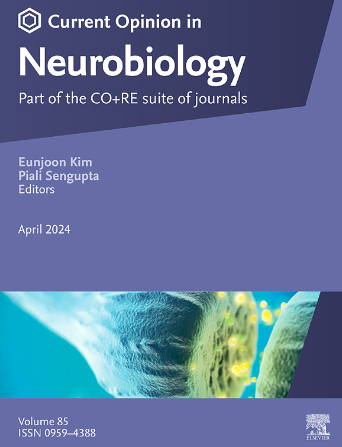Polygenicity in a box: Copy number variants, neural circuit development, and neurodevelopmental disorders
IF 4.8
2区 医学
Q1 NEUROSCIENCES
引用次数: 0
Abstract
Clinically defined neurodevelopmental disorders (cd-NDDs), including Autistic Spectrum Disorder (ASD) and Schizophrenia (Scz), are primarily polygenic: Multiple risk genes distributed across the genome, in potentially infinite combinations, account for variable pathology. Polygenicity raises a fundamental question: Can “core” cd-NDD pathogenic mechanisms be identified given this genomic complexity? With the right models and analytic targets, a distinct class of polygenic mutations—Copy Number Variants (CNVs): contiguous gene deletions or duplications associated with cd-NDD risk—provide a singular opportunity to define cd-NDD pathology. CNVs orthologous to those that confer cd-NDD risk have been engineered in animals as well as human stem cells. Using these tools, one can determine how altered function of multiple genes cause serial stumbles over cell biological steps typically taken to build optimal “polygenic” neural circuits. Thus, cd-NDD pathology may be a consequence of polygenic deviations—stumbles—that exceed limits of adaptive variation for key developmental steps.
盒子里的多基因遗传:拷贝数变异、神经回路发育和神经发育障碍。
临床定义的神经发育障碍(cd-NDDs),包括自闭症谱系障碍(ASD)和精神分裂症(Scz),主要是多基因性的:分布在基因组中的多个风险基因,可能以无限的组合方式,导致不同的病理变化。多基因性提出了一个基本问题:鉴于基因组的复杂性,能否确定 cd-NDD 的 "核心 "致病机制?有了正确的模型和分析目标,一类独特的多基因突变--拷贝数变异(CNV):与 cd-NDD 风险相关的连续基因缺失或重复--为定义 cd-NDD 病理提供了一个独特的机会。我们已在动物和人类干细胞中设计了与赋予 cd-NDD 风险的 CNVs 同源的 CNVs。利用这些工具,我们可以确定多个基因功能的改变如何导致细胞生物学步骤的连续失误,而这些步骤通常是为了构建最佳的 "多基因 "神经回路。因此,cd-NDD 病理学可能是多基因偏差--绊脚石--超出关键发育步骤适应性变异极限的结果。
本文章由计算机程序翻译,如有差异,请以英文原文为准。
求助全文
约1分钟内获得全文
求助全文
来源期刊

Current Opinion in Neurobiology
医学-神经科学
CiteScore
11.10
自引率
1.80%
发文量
130
审稿时长
4-8 weeks
期刊介绍:
Current Opinion in Neurobiology publishes short annotated reviews by leading experts on recent developments in the field of neurobiology. These experts write short reviews describing recent discoveries in this field (in the past 2-5 years), as well as highlighting select individual papers of particular significance.
The journal is thus an important resource allowing researchers and educators to quickly gain an overview and rich understanding of complex and current issues in the field of Neurobiology. The journal takes a unique and valuable approach in focusing each special issue around a topic of scientific and/or societal interest, and then bringing together leading international experts studying that topic, embracing diverse methodologies and perspectives.
Journal Content: The journal consists of 6 issues per year, covering 8 recurring topics every other year in the following categories:
-Neurobiology of Disease-
Neurobiology of Behavior-
Cellular Neuroscience-
Systems Neuroscience-
Developmental Neuroscience-
Neurobiology of Learning and Plasticity-
Molecular Neuroscience-
Computational Neuroscience
 求助内容:
求助内容: 应助结果提醒方式:
应助结果提醒方式:


